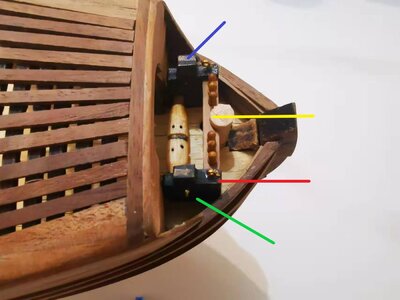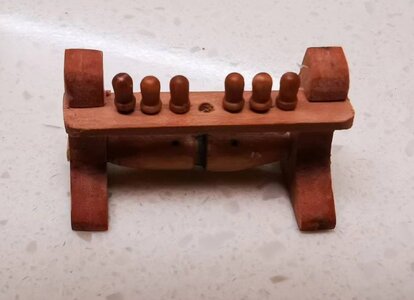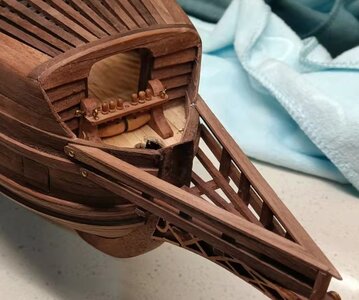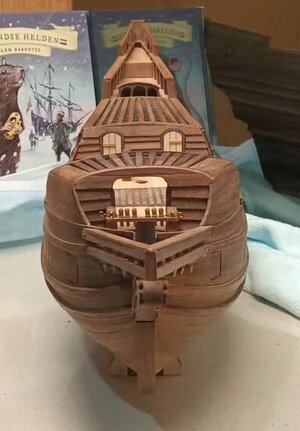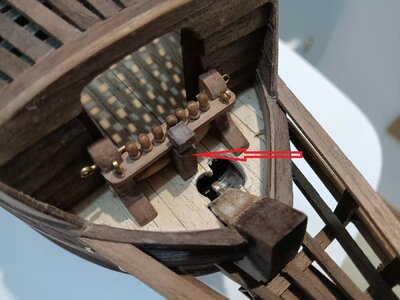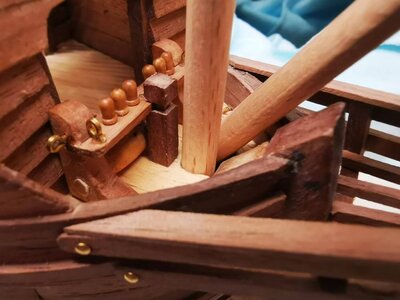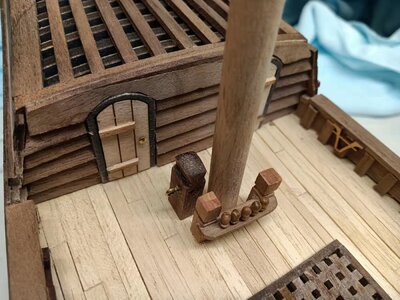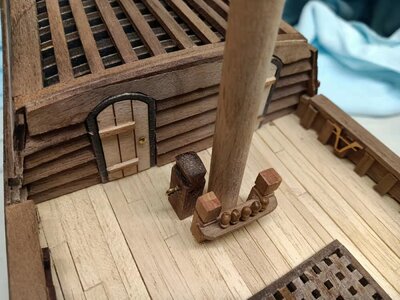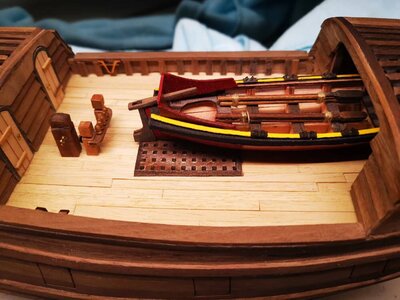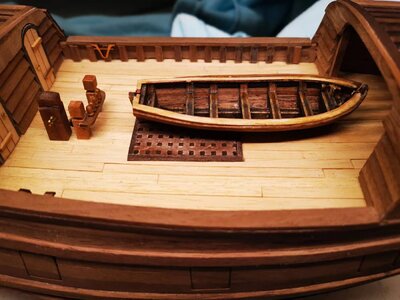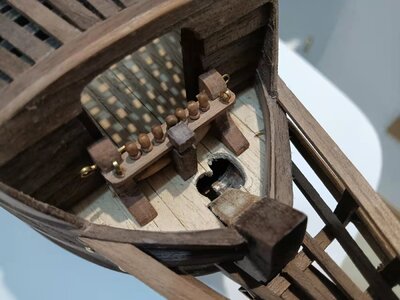Hello Dear Friends
Last night I mentioned that I want to share something interesting with you - well, in actual fact there are two pieces of interesting news I have found. So let's start with the non-controversial one!

Maybe you have wondered, why the Willem Barentsz does not feature permanent decking on the structures midships and at the bow, but instead a net-like cover of lengthwise and crosswise wooden beams (see below as indicated by the yellow arrows).
View attachment 302809
In my continuing research, I came upon this very interesting piece of information. As you know, I recently completed the Willem Barentsz’s front canopy (“overkapping” in Dutch). Reading about the overkapping and its history revealed that it was originally called a “vinkennet” (finch netting).
Now firstly we have to look at terminology. Both names for these structures contain the word "opbouw" - meaning a built-up structure. The one midships was simply called as "opbouw" and the one at the stem a "vooropbouw" or "overkapping". "Vooropbouw" simply means a raised structure at the front of the ship. Now originally, these structures were called a "vinkennet" or finch net.
View attachment 302810
This image clearly shows the finch net. Originally, it was net of sturdy rope or chains that stretched between the forecastle and the deck behind it. - Source: Jan Zwart (Modelbouwforum)
View attachment 302811
Source: Jan Zwart - Modelbouwforum
The term finch-net gradually evolved into “boevennet” (crooks’ net), before it was corrupted into “bovenet” / bovennet” meaning (top net). This part is important as all terminology to the Willem Barentsz relates to boevenet (top net) as used by Ab Hoving.
Het Schip van Willem Barents - Ab Hoving
In his book,
De vlootbouw in Nederland 1596-1655 weergeeft, (Shipbuilding in the Netherlands 1596-1655), Elias writes that at the beginning of the Eighty-Year War numerous Vlieboten and jachten were utilized by the Netherlands. In order to offer these vessels better protection against the much higher, built-up Spanish ships, they were equipped with a lattice- and chain framework that stretched between the forecastle and the deck behind it. The logic behind this was to offer protection to the crew during boarding raids from the enemy. During those days, victory at sea relied heavily on a successful boarding of the enemy; it was only much later that long-range cannon-fire became the decisive factor.
In the painting below by Aert Antonisz of “De Slag by Sluis” (The Battle at Sluis) a ship with boevenet is depicted.
View attachment 302812
The following drawing though, offers a much better visual example (if somewhat grained).
View attachment 302813
Nicolaes Witsen discusses the boevenet extensively, devoting a whole chapter to it, the drawing of the rafters and an explanation how it was built. Interestingly, he mentioned that the boevenet could be removed, resulting in an open canopy. This, however does raise the question why the vooropbouw then has front and rear “walls”.
So why is this important? If we examine the early jachten (of which the WB was one), and take into account that De Veer spoke of boevenetten it becomes clear that the WB was equipped with two in actual fact – one in the form of a half-deck midships and one in the form of the vooronder at the stem. These structures were not permanently closed with decking, but featured the wooden “netting” as seen on the WB as permanent replacements for the earlier finch nets..
And that is how we know why the Willem Barentsz looks the way she does!

Hopefully, I will be back a little later with a galleon update!





 I am just as happy that you enjoy the history behind the bovenet.
I am just as happy that you enjoy the history behind the bovenet. - I actually went to watch Tina Turner when she was in South Africa at the Newlands Cricket Stadium! What can I say about her performance - Awesome!
- I actually went to watch Tina Turner when she was in South Africa at the Newlands Cricket Stadium! What can I say about her performance - Awesome!

